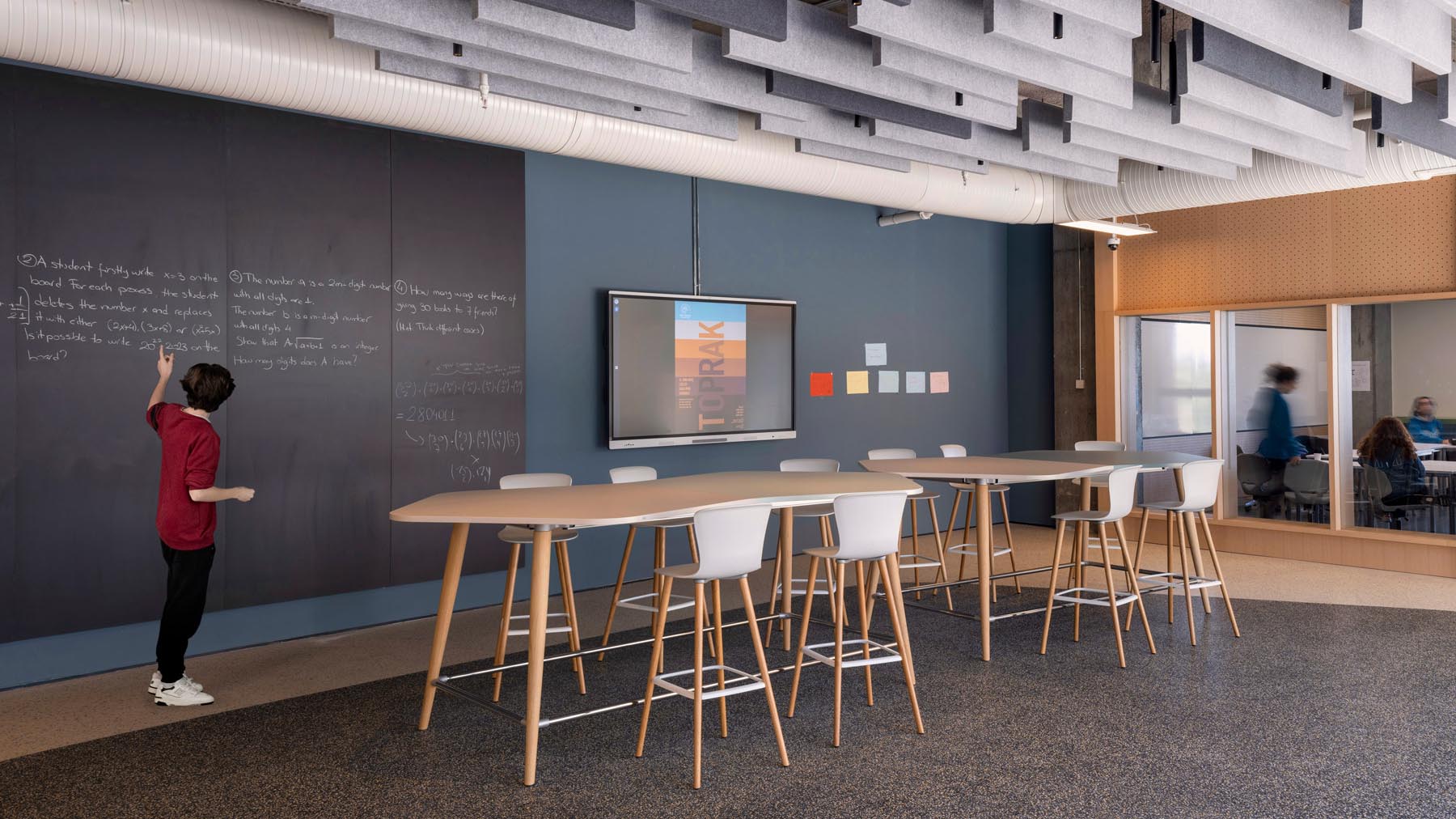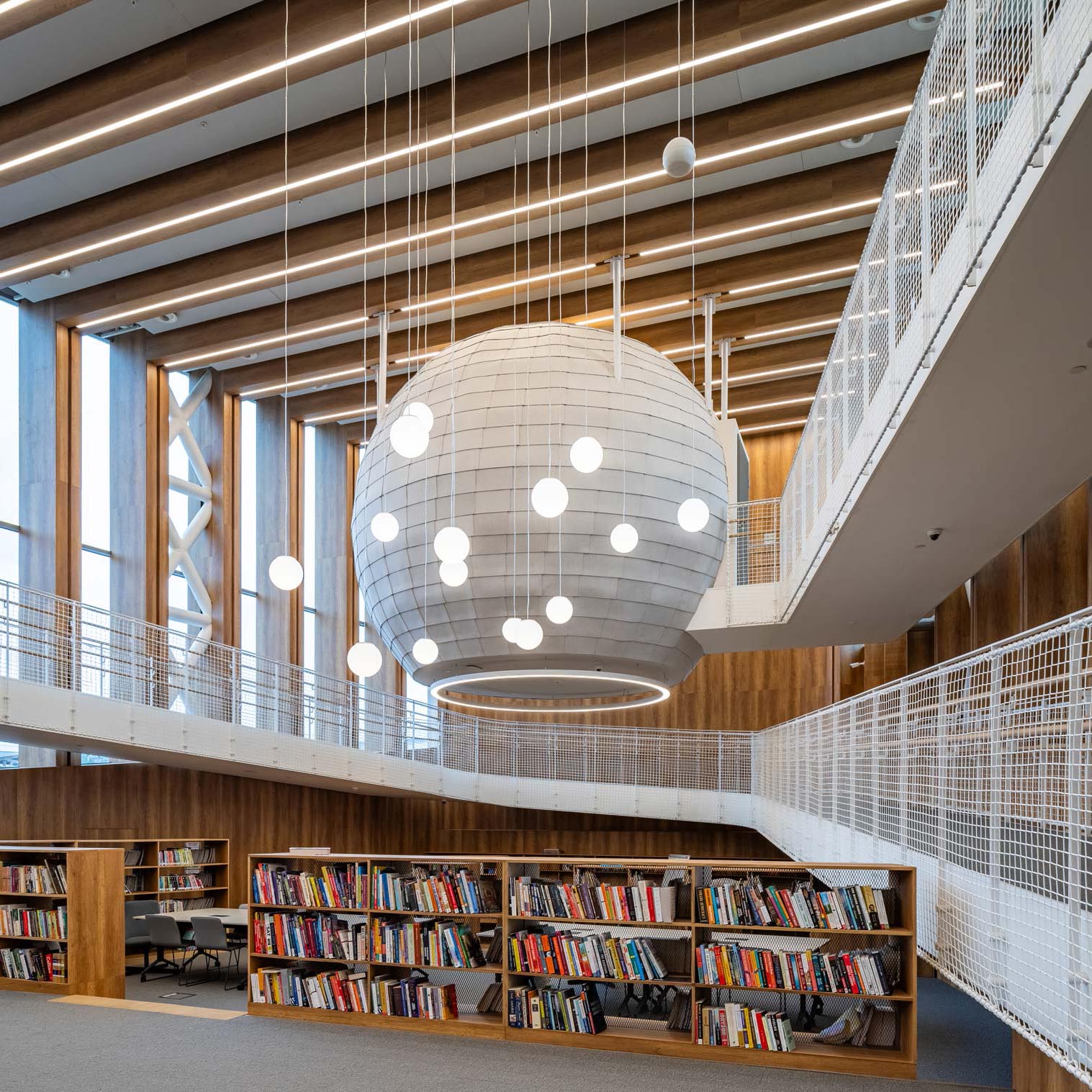-
Creating effective learning environments has become a paramount concern in the education landscape. Recognizing that the physical surroundings profoundly influence the learning experience, educational institutions are increasingly exploring innovative approaches to design spaces that foster active engagement, collaboration, and academic excellence.
-
-
Creating effective learning environments has become a paramount concern in the education landscape. Recognizing that the physical surroundings profoundly influence the learning experience, educational institutions are increasingly exploring innovative approaches to design spaces that foster active engagement, collaboration, and academic excellence.
-
Collaborative spaces have revolutionized educational environments, fundamentally altering how students learn, interact, and engage with course material. These dynamic settings facilitate group work, promote open communication, and inspire creative problem-solving. They achieve this by incorporating flexible furniture arrangements, modular walls, and advanced technology setups.
-
-
-
Traditional classroom setups often hinder collaboration and limit interaction. Collaborative spaces, however, feature movable desks, chairs, and tables that can be reconfigured to accommodate diverse learning activities. This flexibility allows students to work in small groups, engage in discussions, or participate in hands-on projects, fostering a sense of ownership and active participation in the learning process.
-
Modular walls and partitions offer a flexible solution for creating adaptable spaces within a larger area. They can be easily rearranged to form breakout rooms, private study areas, or open collaborative zones. This versatility meets students' varying needs, effectively supporting individual and group work.
-
-
More than just classrooms and collaborative spaces, the broader campus infrastructure plays a pivotal role in shaping the educational experience. A well-designed campus environment can significantly contribute to student success, foster a sense of community, and promote holistic personal and academic growth. This understanding should guide investment decisions and planning strategies.
-
-
- Accessibility and Connectivity: Ensuring seamless accessibility and connectivity across campus facilitates the free flow of ideas and information. This includes well-planned pedestrian pathways, efficient transportation systems, and robust technological infrastructure that enables uninterrupted access to digital resources and online learning platforms.
- Green Spaces and Outdoor Learning Areas: Incorporating green spaces and outdoor learning areas into the campus design can create a refreshing and rejuvenating environment for students. These spaces provide recreational and relaxation opportunities and serve as venues for outdoor classes, study sessions, or informal gatherings, promoting a healthy balance between academic pursuits and personal well-being.
- Sustainable and Energy-Efficient Infrastructure: Embracing sustainable practices and energy-efficient infrastructure contributes to environmental stewardship and creates a more comfortable and cost-effective learning environment. By incorporating energy-efficient lighting, renewable energy sources, and water conservation measures, institutions can lead by example and instill a sense of environmental responsibility in their students.
-
The benefits of informal gathering areas, lounges, and common areas in fostering spontaneous interactions
While formal learning spaces are indispensable for structured education, the value of informal gathering areas, lounges, and common spaces in fostering spontaneous interactions and idea exchange cannot be overstated. These areas are not just additional spaces but integral components that enrich the educational experience by promoting intellectual discourse, collaboration, and personal growth.
Informal gathering spaces provide a neutral ground for students from diverse backgrounds to converge, sparking new ideas and interdisciplinary collaboration. They also facilitate organic interactions among students, faculty, and staff, nurturing mentorship and peer support.
Additionally, these spaces serve as forums for debate and discussion, enhancing critical thinking and open-mindedness. Beyond academics, they support social and emotional well-being by promoting relaxation and a sense of community.
-






